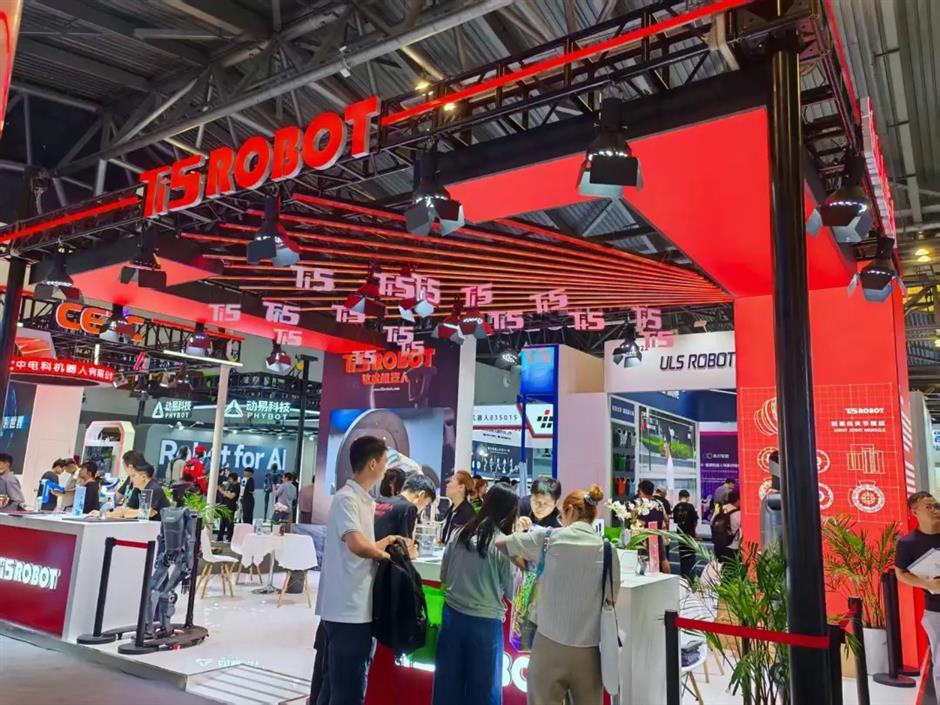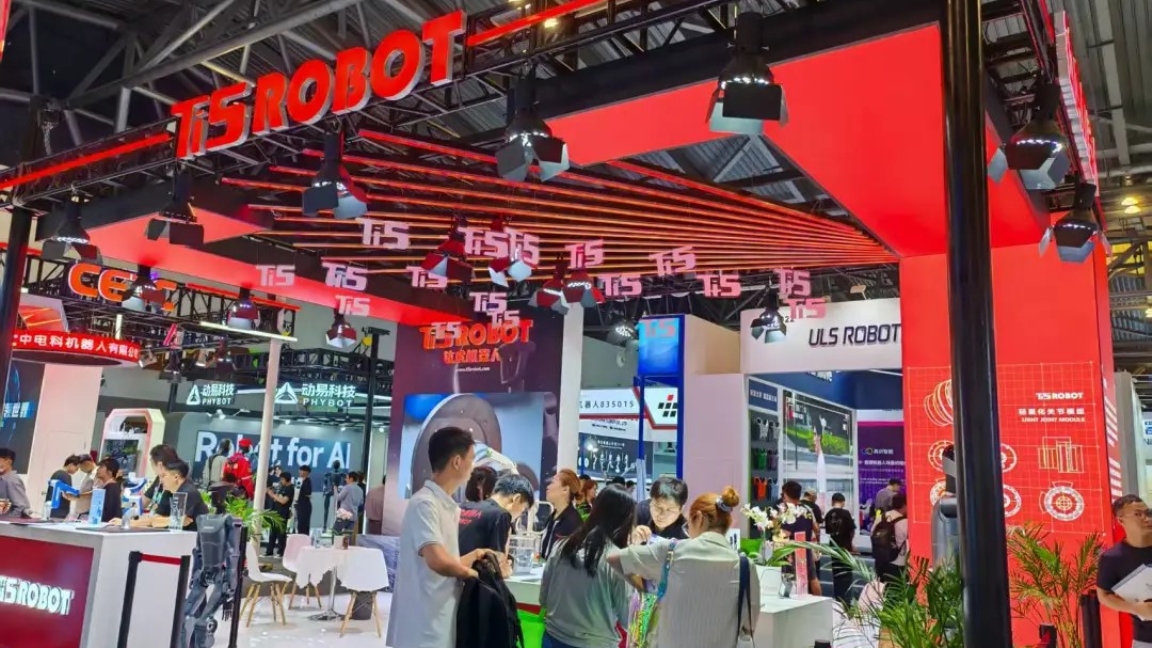

TiS Robot's booth at the WAIC attracts visitors with latest development.
Minhang's artificial intelligence companies took center stage at the 2025 World Artificial Intelligence Conference with district-based companies showcasing a variety of products and services, including robotic arms that can create latte art, walking robots and high-speed photography for industrial inspections.
One of the highlights is a dedicated exhibition area featuring 13 AI companies from the Shanghai Maqiao AI Innovation Pilot Zone, a key hub for AI enterprises in Minhang.
JAKA Lumi demonstrated its capabilities by handshaking, lifting objects and even dancing with agility and composure at the venue.
The embodied intelligence platform developed by JAKA Robotics Co Ltd offers an all-in-one training solution that is both cost-effective and highly efficient.
This platform utilizes integrated drive-control joints, controllers and robotic arms. Through training and development, JAKA Lumi can expand its applications to areas such as restaurants, hotels, homes and elderly care.
Another noteworthy AI company is Magic Fox, which has garnered attention for its on-the-fly inspection technology that allows for a swift assessment of automotive seating in just 40 seconds. The company has partnered with Adient, a global leader in automotive seating.
The Maqiao pilot zone, in Maqiao Town of the southwestern part of Minhang, is adjacent to Shanghai Jiao Tong University and the Zizhu Science Park.
Spanning 15.7 square kilometers, it provides numerous test scenarios for the application of AI technology. The zone aims to develop into a comprehensive AI future city that combines application demonstrations, research and development innovation, training demonstrations, consumer experiences and product manufacturing.
Maqiao has absorbed advanced concepts of urban development and sci-tech innovation from around the globe, forming a unique AI industry cluster with a global competitive edge and leading technologies.
It is now home to over 150 companies in the intelligent service robot sector, with an annual industry output value of approximately 12 billion yuan (US$1.67 billion).
Top 10 ranking
Shanghai Top Numerical Control Technology Co was recognized in the top 10 ranking by the SAIL award during this year's WAIC, a prestigious international accolade in the field of AI, known for its "Superior," "Applicative," "Innovative" and "Leading" qualities.
The company has established its headquarters and a research and development base in Minhang and received acknowledgement for its award-winning AI-backed five-axis computer numerical control machine tool.
This tool has integrated large industrial models into the underlying architecture of computer numerical control systems.
It has also leveraged the AI industry and research ecosystem by collaborating with local research institutions such as Aero Engine Corporation of China's Commercial Aircraft Engine Co Ltd and the Shanghai Academy of Spaceflight Technology.
At the contract signing ceremony for Shanghai's major artificial intelligence projects, HHS Robotics and TiS Robot's core component manufacturing center became the latest AI initiatives to establish a presence in Minhang.
Minhang Deputy Director Zhang Xian signed the investment contract, providing the district with renewed momentum to unlock the extensive potential of robotics solutions across various sectors.
TiS Robot's administrative office, research departments and module testing units will be situated in Maqiao, where its manufacturing lines will focus on producing precision parts and key components.
HHS Robotics intends to provide a wide range of robots for various industries and application scenarios, such as healthcare, education, commerce and manufacturing.
Latest eVTOL model
TCab Tech stands out as the sole electric vertical takeoff and landing aircraft (eVTOL) company to showcase a model at the WAIC.
The E20, TCab Tech's self-developed flagship model, is anticipated to receive airworthiness verification by 2027 and is set to commence operations in both the Yangtze River Delta and Pearl River Delta regions.
This model has fully harnessed AI capabilities to achieve millimeter-level precision control during crucial phases such as tilt transition and path planning.
The aircraft's neural network processes hundreds of sensor parameters in real time to create a health model for essential components.
In contrast to traditional aviation maintenance, which relies on regular inspections, the E20 features a warning system that identifies glitches and enables predictive maintenance. This serves as another example of how AI can be applied in commercial settings and real-world business scenarios.

